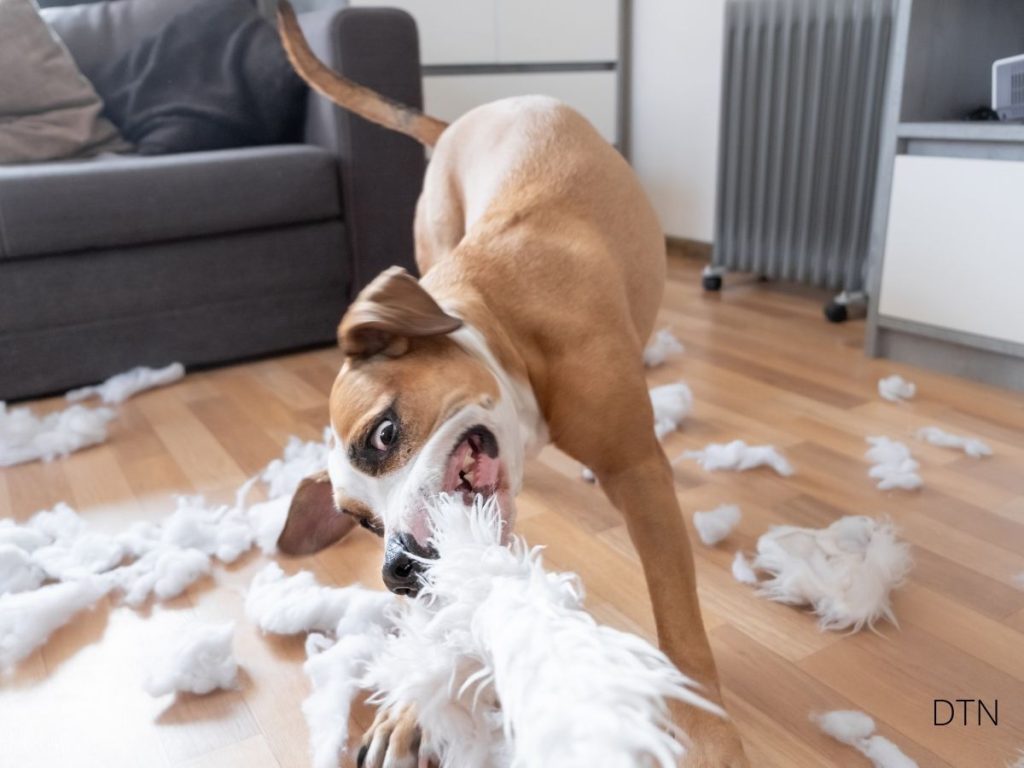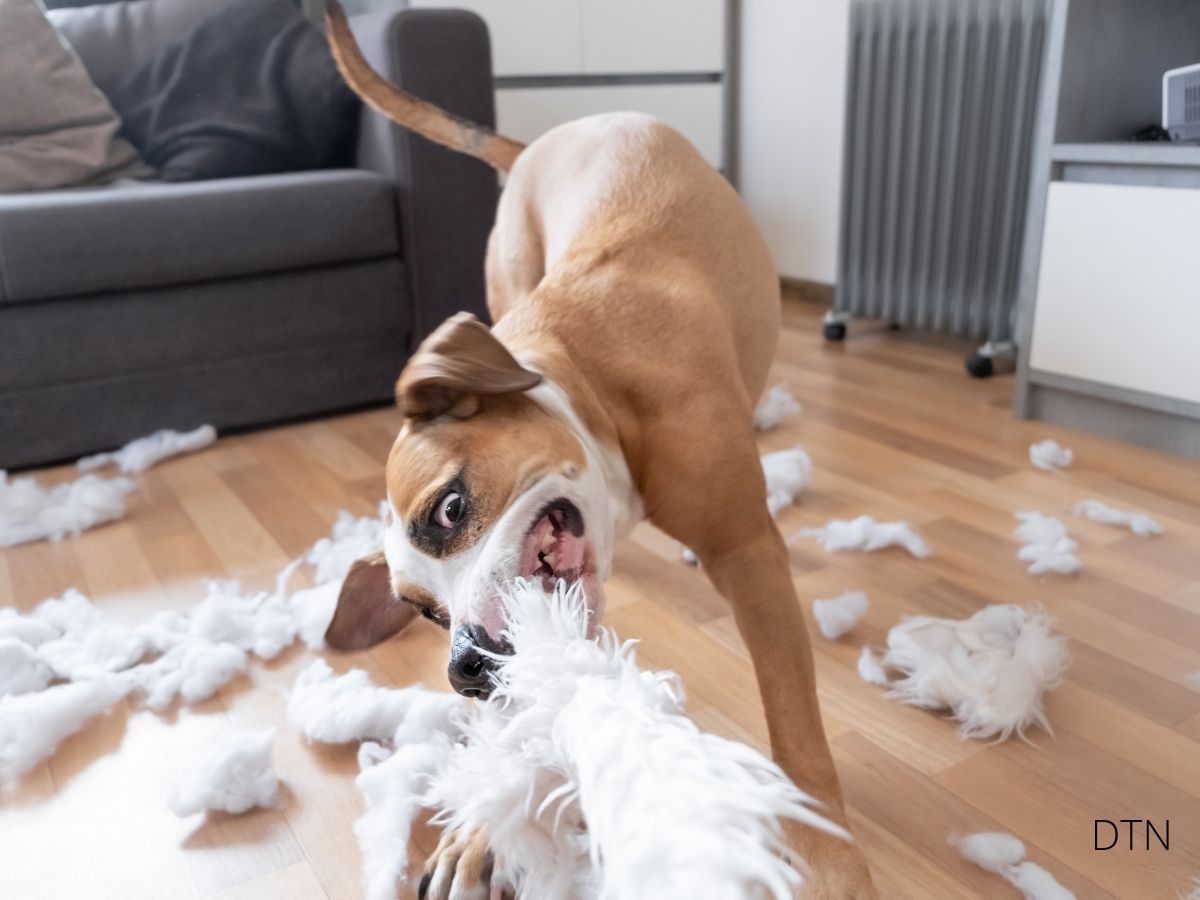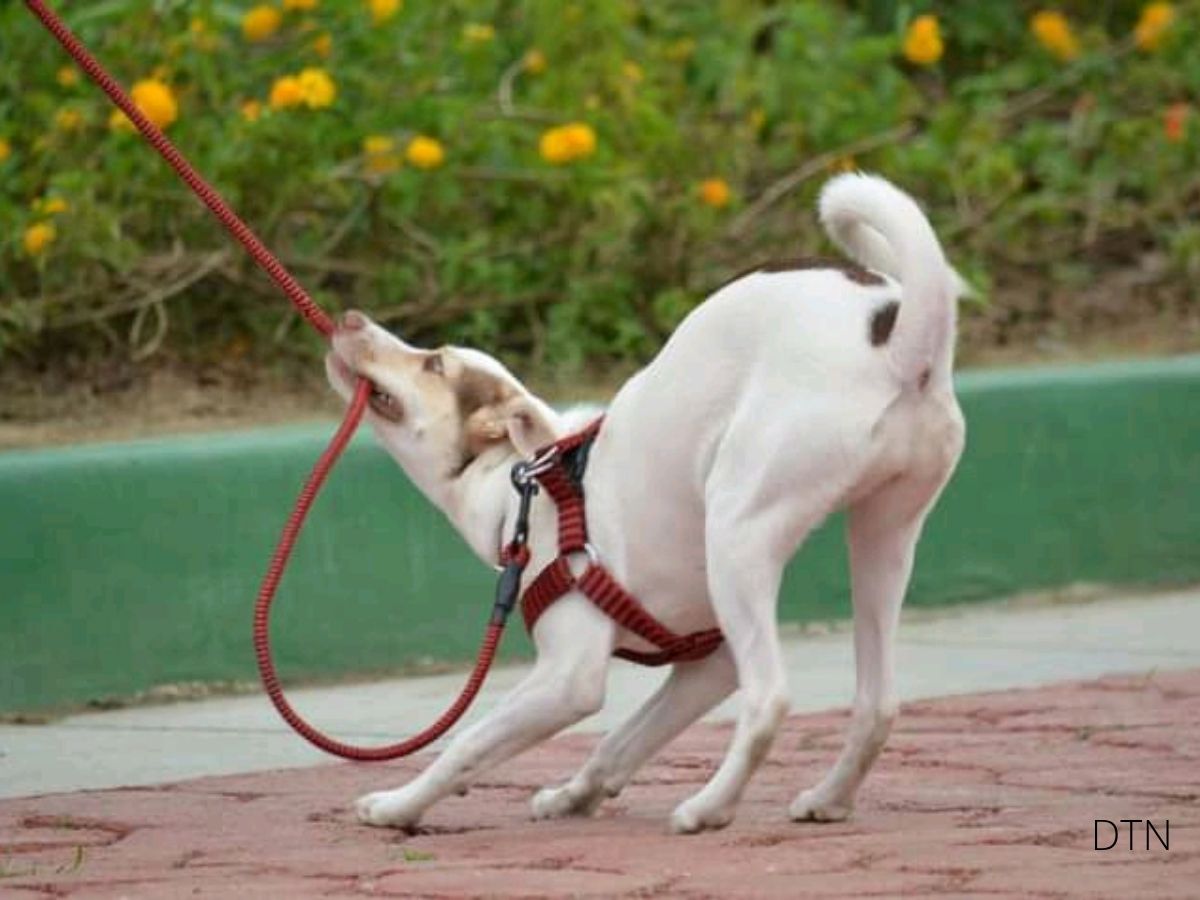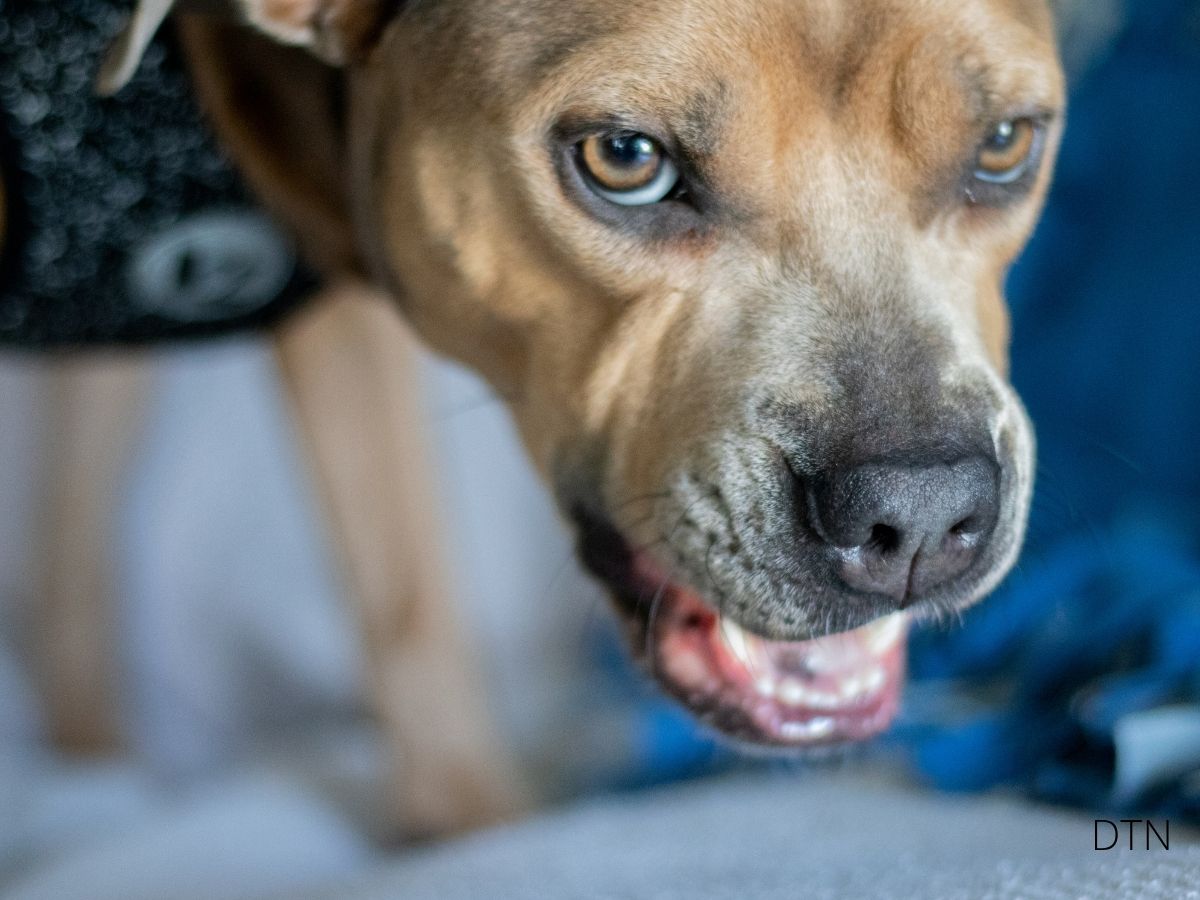Coming home to find your favorite couch torn apart can feel like betrayal from your furry friend. Yet this destructive behavior tells a deeper story about your dog’s emotional state and unmet needs. Let us guide you through understanding why dogs destroy furniture when alone, and more importantly, how you can help them overcome this challenging behavior.
Understanding the Root Causes
Separation Anxiety vs. Boredom
Did you know that the pattern of destruction in your home reveals whether your dog suffers from separation anxiety or simple boredom? These two causes require distinctly different approaches, making accurate identification crucial for success.
Separation anxiety manifests as a cluster of distress behaviors beyond mere destruction. You might notice excessive vocalization beginning shortly after departure, inappropriate elimination despite house-training, and destruction focused on exit points or items carrying your scent. These behaviors stem from genuine fear of being alone – your dog’s amygdala becomes hypersensitive, triggering overwhelming stress responses.
Boredom-driven destruction presents differently. Dogs destroying from under-stimulation chew various items indiscriminately, show no departure distress, and typically begin destroying after extended alone periods. They’re simply seeking mental and physical engagement through the only means available.
The distinction matters because treating boredom with anxiety protocols won’t address the root cause. Take time to observe your dog’s overall patterns – this investment in understanding will guide your entire approach.
The Biology Behind Destructive Behavior
When your dog chews during stress, they’re engaging in an ancient self-soothing mechanism that releases endorphins. This biological response explains why stressed dogs gravitate toward repetitive chewing behaviors, much like humans might bite their nails when anxious.
Deep within your dog’s brain, the HPA (Hypothalamic-Pituitary-Adrenal) axis acts as an alarm system. When triggered by separation, this floods your dog’s body with cortisol. In anxiety-prone dogs, even picking up your keys can trigger this full stress response. Chronic activation leads to persistently elevated cortisol, manifesting as destructive behavior as your dog attempts to cope with physiological distress.
This isn’t something your dog can “get over” through willpower – the biological response is involuntary. Recognizing this helps us approach treatment with appropriate interventions rather than punishment 🧠
Environmental and Behavioral Factors
High-Risk Demographics
Certain dogs face higher risks for developing destructive behaviors. Young puppies naturally explore through their mouths, combining teething discomfort with underdeveloped impulse control. Working breeds like Border Collies or Terriers possess intense drives that, without appropriate outlets, redirect into destruction. Recently adopted dogs face adjustment stress and unclear boundaries, potentially triggering destructive coping mechanisms.
Understanding your dog’s predispositions helps implement preventive measures before problems escalate. These dogs aren’t “bad” – they simply need more structured support to develop healthy coping strategies.
Environmental Enrichment
An enriched environment acts as a buffer against destructive behavior. Think of your home as your dog’s entire world when you’re away – is it engaging enough to prevent boredom-driven destruction?
Physical enrichment includes puzzle feeders turning mealtime into mental work, rotating toy selections maintaining novelty, and safe chew items with varying textures. Sensory enrichment engages multiple senses through calming music, pheromone diffusers, and different textures. Cognitive challenges come from interactive toys, hidden treats encouraging search behaviors, and food-dispensing toys extending engagement.
Research confirms enriched environments reduce threat perception and stress. Your investment in enrichment pays dividends through reduced destruction and improved emotional well-being.
Owner Routines Matter
Your daily routines profoundly impact your dog’s coping abilities. Dogs quickly associate specific actions with your departure – keys jingling, shoes going on, morning bathroom routines. These “departure cues” can trigger anticipatory anxiety.
To reduce their emotional charge, practice “fake departures” – perform leaving routines without actually leaving. Pick up keys, then sit down to watch TV. Put on your coat, then take it off and prepare dinner. This breaks the predictive association between cues and abandonment.
Keep return greetings calm and low-key. Overly excited reunions inadvertently reinforce anxiety by making your return the day’s highlight. Creating predictable schedules with consistent departure times, regular exercise before leaving, and established quiet-time routines builds emotional security 🧡
There is no psychiatrist in the world like a puppy licking your face.
– Ben Williams

Effective Training Interventions
Desensitization and Gradual Exposure
Desensitization represents one of the most effective approaches for separation-related destruction. This systematic process gradually exposes your dog to departure cues and brief absences without triggering anxiety.
Begin with micro-departures: stand and sit immediately, rewarding calm behavior. Progress to walking to the door and returning, touching the doorknob, opening and closing the door while remaining visible, then stepping outside for seconds. Gradually extend duration by small increments.
The key is progressing slowly enough that your dog remains calm throughout. If you notice distress signs, you’ve moved too quickly. This process requires patience – expect weeks to months for significant improvement – but creates lasting change.
Crate Training Done Right
When properly introduced, a crate becomes your dog’s sanctuary. Start by making it inviting without pressure – comfortable bedding, favorite toys, meals fed nearby then inside. Build positive associations through treat-hiding and special crate-only toys.
Gradually increase crate duration while present, then practice brief room departures. The crate should never feel like punishment but rather a safe management tool providing structure and security many dogs find comforting.
Interactive Solutions
Modern solutions keep dogs engaged during absence. Puzzle toys and feeders transform meals into activities. Technology like treat-dispensing cameras enables remote interaction. Professional services including dog walkers or daycare provide crucial midday breaks.
The goal isn’t eliminating alone time but making it manageable and enriching. Combining multiple strategies addresses different aspects of your dog’s needs.
Calming Aids and Support
While training addresses root causes, calming aids provide valuable support during the modification process. Pheromone therapy using DAP (Dog Appeasing Pheromone) diffusers mimics natural maternal calming signals. Anxiety wraps provide gentle pressure similar to swaddling. Nutraceuticals containing L-theanine or alpha-casozepine support neurological balance.
For severe cases, veterinary-prescribed anti-anxiety medications may be necessary, allowing behavioral modification techniques to be more effective. These aids work best as part of a comprehensive approach, not standalone solutions.
The Nutrition Connection
Your dog’s diet directly influences destructive behavior. High-energy foods in sedentary dogs create energy surpluses manifesting as destruction. Consider your dog’s actual energy expenditure when selecting food – that “performance formula” might be fueling furniture destruction if your dog’s most athletic moment is walking to their bowl.
Certain nutrients naturally promote calm: L-tryptophan (serotonin precursor), B-vitamins (stress management), omega-3 fatty acids (brain health), and magnesium (natural relaxant). Strategic feeding timing also helps – morning meals 30-60 minutes before departure promote rest during absence.
Quality chews provide destruction prevention. For anxiety-driven destroyers, try frozen Kongs or lick mats. Boredom-driven destroyers benefit from puzzle toys and flavored synthetic chews. The investment in appropriate chews costs far less than replaced furniture 🐾
Professional Support and Prevention
When to Seek Help
Your veterinarian should be your first stop when destructive behavior emerges. Medical rule-outs ensure physical health isn’t contributing – dental pain, gastrointestinal issues, or hormonal imbalances can manifest as destruction. Behavioral screening during routine exams helps identify issues early.
Don’t wait for severity before seeking help. Early intervention means simpler solutions. Veterinarians can provide referrals to certified behaviorists and document concerns important for insurance or housing situations.
Prevention During Puppyhood
Prevention during puppyhood is crucial. The critical socialization period (3-14 weeks) shapes future coping abilities through gradual alone-time introduction, positive confinement associations, and confidence building. Independence training starts with seconds of separation, not minutes, using baby gates before closed doors.
Provide appropriate outlets through varied chew textures, rotating toys, and immediate gentle redirection from inappropriate items. This early investment prevents years of destructive behavior.
Creating Your Action Plan
Immediate Steps
Today: Document destruction patterns, remove valuables temporarily, provide appropriate chew alternatives, schedule veterinary consultation, and begin casual departure cue desensitization.
This Week: Implement basic enrichment, start micro-departures if anxiety is suspected, increase exercise by 20%, research local trainers, and join support communities.
This Month: Establish consistent routines, begin formal training protocols, evaluate calming aids, track progress, and adjust based on results.
Remember, every dog progresses at their own pace. Some show improvement within days, others need months of patient work. The key is starting and maintaining forward momentum.
Conclusion
Destructive behavior when alone doesn’t define your dog or predict your future together. It’s a solvable problem that, when addressed with understanding and appropriate intervention, can actually strengthen your bond.
You now understand destruction stems from emotional distress or unmet needs – not spite. You recognize the neurobiological factors and environmental influences. Most importantly, you have practical tools for creating positive change.
The path forward requires patience, consistency, and sometimes professional support. There will be setbacks, but also breakthrough moments reminding you why you fell in love with your furry friend. Your commitment to understanding and addressing this behavior demonstrates the depth of your bond.
Take heart knowing you’re not alone in this journey. With the right approach and unwavering patience, you and your dog will overcome this challenge together. The peaceful homecomings you envision aren’t just possible – they’re waiting just around the corner 🧡






